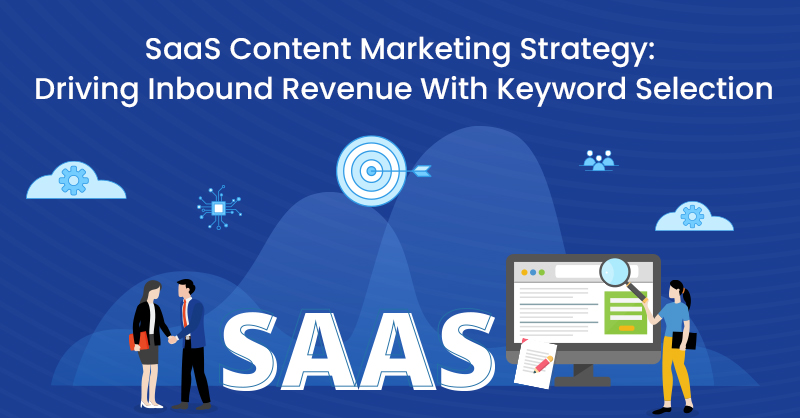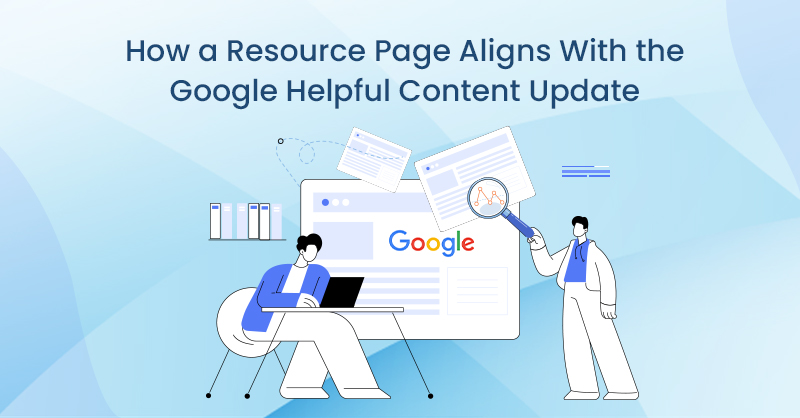The way that people make buying decisions for SaaS follows a relatively predictable pattern. One person builds out a new function. They use free tools (Google Drive usually) in the early days.
They hire more people to own the function, start experiencing workflow or process issues, and eventually, someone is tasked with finding a SaaS solution to alleviate the pains everyone’s experiencing. The first step that person takes is to “collect basic information.”
According to Gartner, “The buyer uses Google to reach third-party vendor sites to collect basic information and understand market landscape.”
For those without a large, well-known, brand presence, if you’re not discovered when the buyer or researcher is seeking to collect basic information to solve their problems, you’re not likely to come up later in the journey.
There are many ways to conduct keyword research that will result in a nice list of terms with data points like average search volume. If done well, this keyword research exercise should result in a large list of queries across the entire spectrum of relevance to your industry.
These queries may include product/service categories, individual features, how to questions, and pain expressions like streamline, automate, improve, increase, what is, best, cost-effective, top, templates, examples, data, analysis, experts, services, and more.

But this list alone doesn’t necessarily mean you’ve done keyword research “well,” let alone in a way that will drive growth for your business. So, how do we go about identifying the types of search queries being used that would signal to us as marketers that:
- The prospect is currently in the research phase of the buying process.
- The prospect is in my target market and is a fit.
- The prospect is expressing an issue that my product can solve.
Most SaaS development companies live in a core category. A CRM, an LMS, an ERP, Marketing Automation, etc. It’s easy to start and stop there, saying “well if someone is looking for my category, they are looking to buy, so that is what we should focus on.” But don’t assume those searchers are your only buyers just because they happen to know that category name.
Even well-established categories are often misunderstood or misaligned with what the prospect may actually need. Someone may initially search for a “marketing automation platform” when all they are actually trying to achieve is sending out a monthly newsletter automatically.
To use a B2C example from a past life of mine, just because you call them “women’s athleisure leggings” internally, doesn’t mean you shouldn’t also call them “yoga pants” externally. For these reasons, it’s necessary to expand your list of keyword targets instead of just trying to improve rankings for 1 or 2 main categories.
Understanding Searcher Intent
I’ve poured over many keywords for SaaS companies in my day and in doing so, have recognized a few common elements to search terms. Here are some of the key things to look for when trying to target keywords that could have more buying intent behind them:
- Pain Modifiers: These are often signals of what the prospect is trying to learn about or solve. Improve, increase, automate, track, etc.
Followed by the “what”—sales, emails, employee engagement, marketing attribution, lead scoring, forecasting, client renewals, and employee training, i.e. “improve SEO ranking.”
- Solutioning Terms: This is the part of the query, or sometimes the whole query, where the searcher has already come to a slight conclusion as to what they need to solve the problem.
A platform, a solution, a service, a consultant, a system, a tool, an app. Strong signals like this are indications they are interested in software to solve the problem, which means, closer to revenue. This is always where product category terms are used.
- Industry Modifiers: One of the weaknesses of SEO is you don't really know who the person is behind the search. Is it really a buyer or just a student doing a research paper? Is this person working in my industry, or are they a prospective customer?
That’s why it’s important to know if there are search terms that are self-identifying in some way. If so, and you serve that audience specifically, the terms that have an industry modifier like “for sales” or “for healthcare” can be more valuable to your company, even if there is significantly less volume.
The best terms are those that contain 2 out of the 3 of these elements in the search query that match with your target audience.
If you are an accounting software that serves car dealerships, terms like “accounting tools for car dealerships,” “dealership account solutions,” and “improve dealership accounting” are better terms to create content for than “accounting software” or “streamline accounting processes.”
Seems intuitive, but it’s easy to get distracted by the terms with the larger search volume.
Personalize Content and Page Experience To Match Intent
Think of all the perfect combinations of the three components above to find great keywords for your pages to rank well for.

Plan to create a page that speaks to each one of these so that:
- You have unique content and optimization tactics to rank well for that term on a page-by-page basis.
Don’t try to create one page and hope to rank for all (or even clusters of) keywords unless they are extremely similar (sales forecasting tool, forecasting sales tools, for example, wouldn't warrant separate pages).
- Align the content so that when users arrive on that page, you’re speaking their language by echoing back to them the terms they just searched for. If a prospect searches for “lead enrichment platform for sales teams” and lands on a page where the hero headline is “Sales Prospecting Software,” they might feel like they’re in the wrong place.
Even when the term is not “exactly” what you do or does not quite align with your brand messaging, it’s important to meet the searcher where they are at, and then persuade/educate them that what they are looking for is what you have, and that you just call it something slightly different.
- Align key premium content and offer to match the intent. Those terms with high “solutioning” signals like “platform, software, solution,” should offer a demo or show product screenshots or video.
Those that may be more pain expressions like “improve, increase,” should offer CTAs leading to great thought leadership pieces, or an ebook on the topic.
Next Step? Profit!
Obviously, there is a lot that needs to happen to turn visitors into leads and customers, but this discovery step is critical.
Just remember, not all prospects will search your software category by name, and keywords indicate varying levels of buying intent. Google keyword data is a leading indicator of what pains and problems your prospects are seeking to solve, and how they do so is always changing.
We’re constantly challenging our customers to expand their keyword universe to include all the right variations and combinations or terms to ensure they are showing up during the critical phase of research and discovery.
This also means building a lot more pages and customizing the content to meet the prospect where they are, instead of creating a one size fits all messaging approach and hoping all buyers “get it.”
It’s almost impossible to hit 40 home runs with only 50 at-bats. A great content strategy built upon high buyer intent keywords will give your sales organization the “at bats” needed for a consistent stream of closed-won opportunities.
Because you’ve focused on intent, these inbound opportunities will be a more relevant fit for your sales team, and I’m sure they’ll knock a few out of the park.







on
Now a days we choose topics based on keywords, by this we can ensure we are delivering people exactly what they are asking for. & target a potential audience. Saas Marketing is maninly depends on SEO, PPC & Social media marketing are not so useful here.